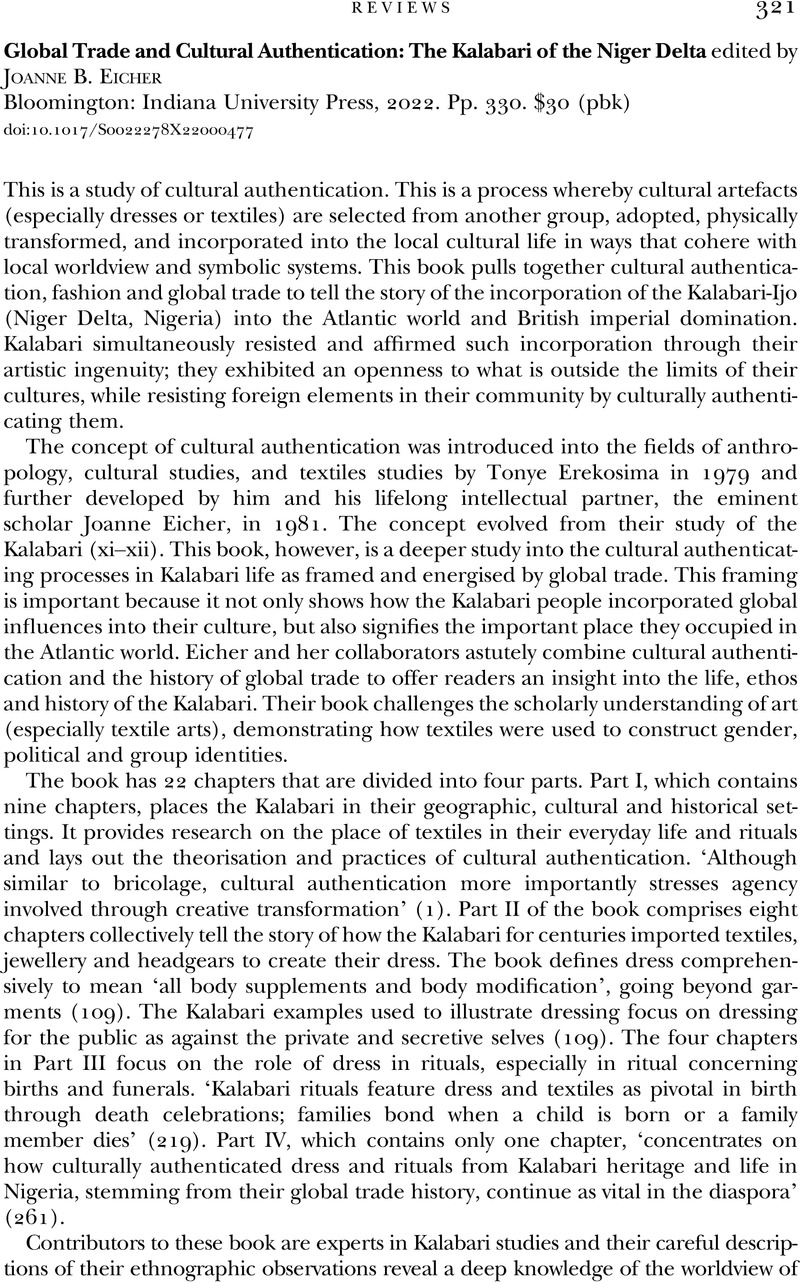No CrossRef data available.
Article contents
Global Trade and Cultural Authentication: The Kalabari of the Niger Delta edited by Joanne B. Eicher Bloomington: Indiana University Press, 2022. Pp. 330. $30 (pbk)
Review products
Global Trade and Cultural Authentication: The Kalabari of the Niger Delta edited by Joanne B. Eicher Bloomington: Indiana University Press, 2022. Pp. 330. $30 (pbk)
Published online by Cambridge University Press: 26 July 2023
Abstract
An abstract is not available for this content so a preview has been provided. Please use the Get access link above for information on how to access this content.

- Type
- Review
- Information
- Copyright
- Copyright © The Author(s), 2023. Published by Cambridge University Press



